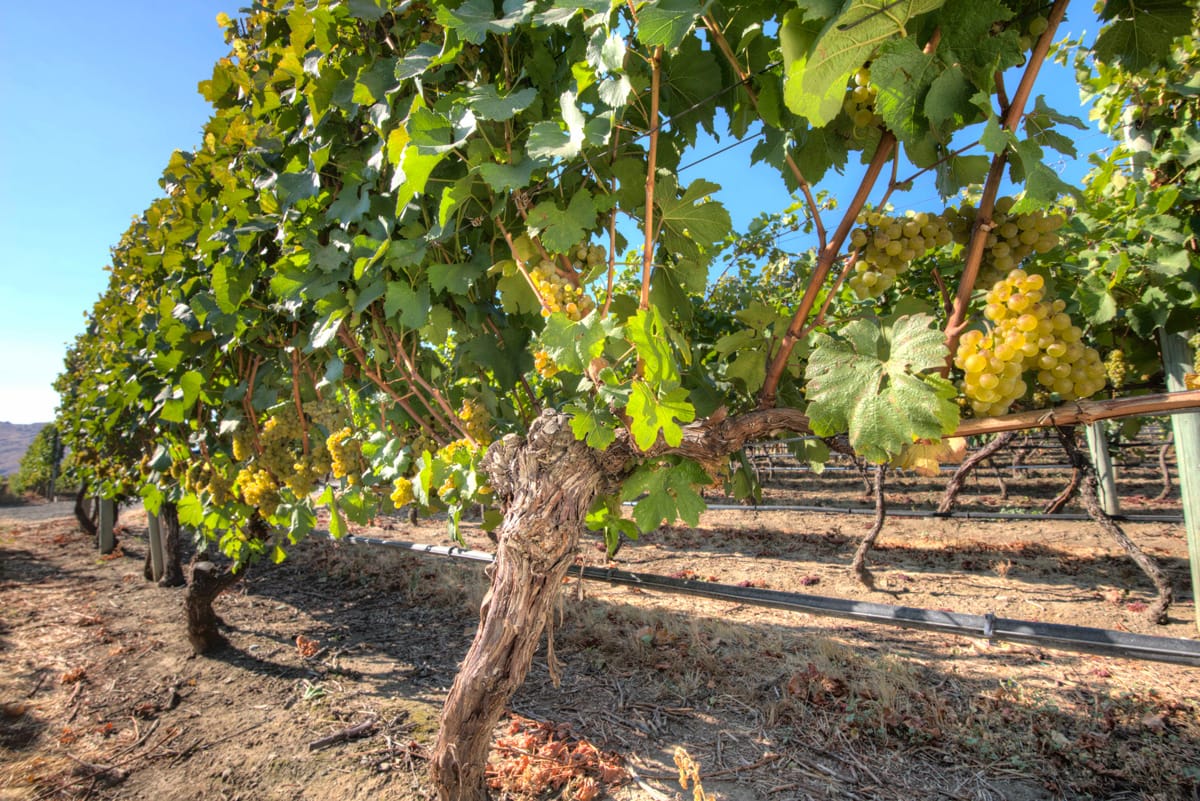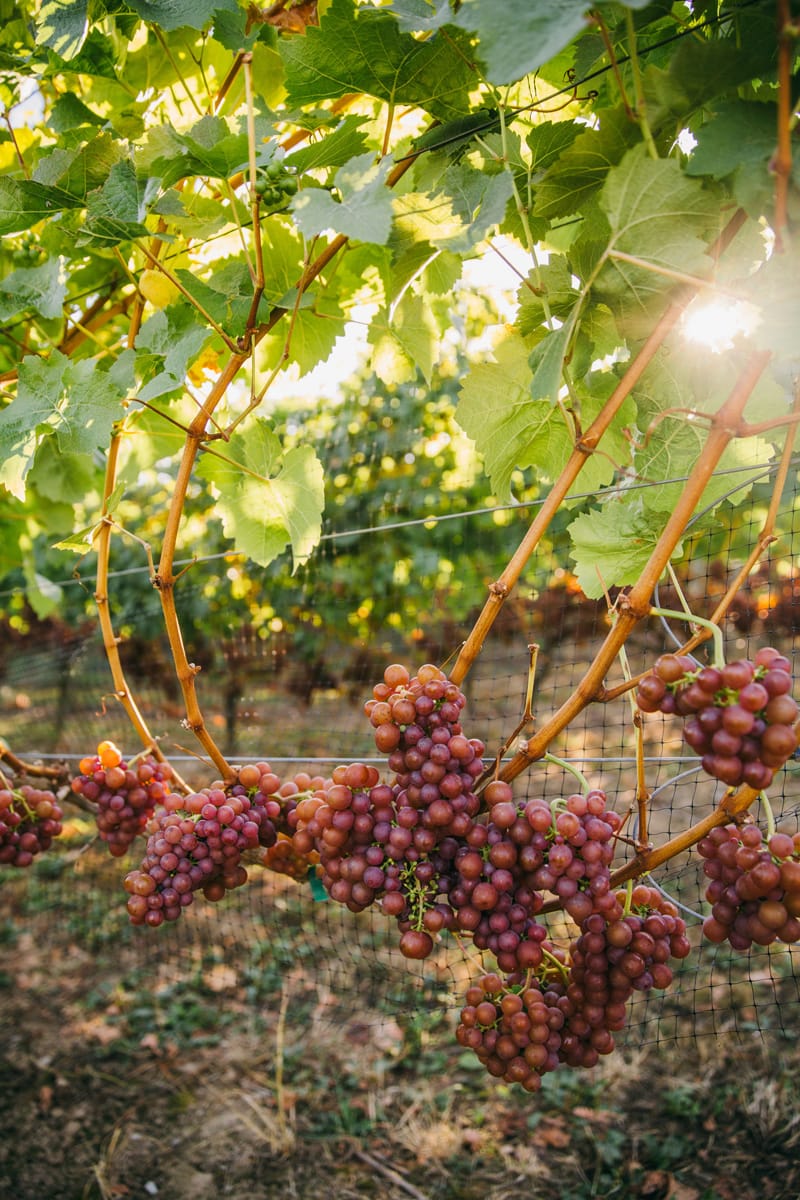
Wine Culture Magazine

Hester Creek’s Trebbiano vines are over 50 years old. Lionel Trudel photo
Acouple of decades back, years before Gray Monk Estate Winery was purchased by its current owner, co-founder Trudy Heiss shared a story about Siegerrebe. There was pressure from “others” in the family to remove the variety, a cross between Gewürztraminer and Madeleine Angevine.
“I told them: ‘Pull it out and next morning there’ll be a body in the parking lot,’ ” she said, only half joking.
No surprise, the Siegerrebe (which had come to B.C. in the 1970s with the Becker Project that oversaw trial plantings of 27 classic European vinis vinifera varieties) remained in Gray Monk’s portfolio. What Heiss well understood was its popularity—not only in her own glass, but also in the tasting room. Heiss was pushing back against a common practice at the time: to defer to marketers dictating that in order for B.C. to compete on the world stage it needed to grow only varieties well known in the mainstream. Not to mention those with names easy to pronounce.
Happily, Heiss wasn’t the only one to recognize the value in preserving “legacy” plantings. In many instances they’ve become signature (if somewhat esoteric) wines sought by consumers in search of something different. Moreover, in a twist of irony, that “old vines” moniker today brings undisputed cachet.
In another twist, Siegerrebe plantings, while still diminutive, have actually increased.
In another twist, Siegerrebe plantings, while still diminutive, have actually increased. Several wineries beyond the Okanagan—such as Recline Ridge and Sunnybrae in the Shuswap, Singletree and Chaberton in the Fraser Valley and, on Vancouver Island, 40 Knots, Beaufort and Rocky Creek—have embraced it.

Singletree’s Siegerrebe vines. Justine Russo photo
Few grapes are as polarizing as Marechal Foch, a rustic red hybrid the late Harry McWatters used to joke that he loved—most of all pulled out, its vines chopped up and burned on the barbecue! However, despite being sometimes disparaged, a number of older Foch plantings remain.
Sperling Vineyards artfully blends fruit from 50-year-old Foch with 30-year-old Pinot Noir in its popular Market Red. And at Quails’ Gate (which once used not to even bother making it into wine), the 50-plus-year-old vines command a considerable following. These days Old Vines Foch Reserve consistently sells out.
Indeed, there’s a flickering of a hybrid revival. In Kamloops, Monte Creek blends Marquette and Frontenac Noir with Merlot to make Hands Up Red, while Frontenac Blanc, La Crescent and Frontenac Gris produce Hands Up White. And bullish Markus Frind (who bankrolled his West Kelowna Frind Estate Winery from the sale of his online dating service, Plenty of Fish) is planting Regent, a red hybrid grown in his native Bavaria.
Still, it’s the old vines, particularly vinifera, that capture our imagination. Among the most notable (and unique): Hester Creek’s Trebbiano, which maverick Joe Busnardo planted at what was then Divino Winery in 1968; and the world’s only known Sovereign Opal, which dates from 1976. It’s produced by Conviction Vineyard (B.C.’s oldest winery, formerly known as Calona Vineyards), from vines in the Mission District’s almost century-old Casorso Vineyard.
Gray Monk Siegerrebe 2018, planted early 1970s
(Okanagan Valley, $16.59) Tropical, orchard, citrus, floral.
Conviction Sovereign Opal 2018, planted 1976
(Okanagan Valley, $14.49) Off-dry, orchard fruits, citrus, pear, luscious.
St. Hubertus Riesling 2018, planted 1978
(Okanagan Valley, $18) Lemon-lime, mineral undertone, lingering zesty close.
Sperling Vineyards The Market Red 2017, planted 1970/1990
(Okanagan Valley, $20) Red berries, fresh and juicy, minimal oak.
Quails’ Gate Old Vines Foch Reserve 2016, planted 1960s
(Okanagan Valley, $46.99) Dark berries, vanilla, black cherry, spice, tobacco.
Hester Creek Trebbiano 2017, planted 1968
(Golden Mile Bench, $20.99) Citrus, honey, tropical, mango, papaya, mineral, juicy acidity.

Tim Pawsey writes and shoots at hiredbelly.com as well as for publications including Quench, TASTE and Montecristo. He’s a frequent wine judge and is a founding member of the B.C. Hospitality Foundation.

Tim Pawsey writes and shoots at hiredbelly.com as well as for publications including Quench, TASTE and Montecristo. He’s a frequent wine judge and is a founding member of the B.C. Hospitality Foundation.
@ Vitis Magazine